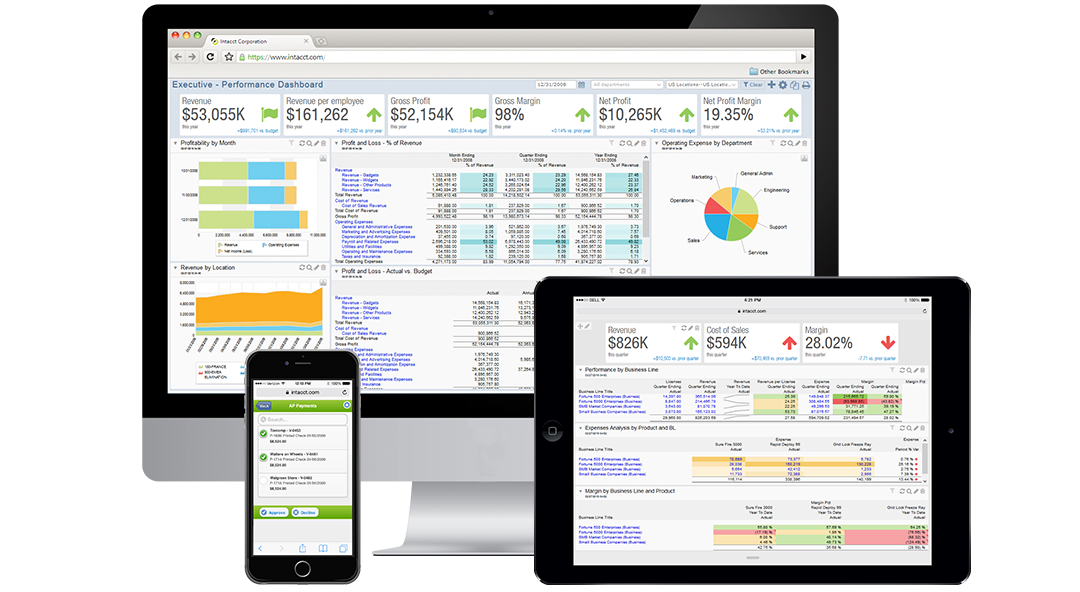In the realm of nonprofits, maintaining transparency and accountability in financial operations is not merely an aspiration—it’s a necessity. As these organizations frequently rely on external funding, donors, and grants, the significance of being audit-ready is paramount.
Unfortunately, many nonprofits find themselves ensnared in the intricacies of the auditing process, largely due to the complexities inherent in the sector’s financial regulations and standards.
Whether you’re familiar with the nuances of FASB 958 and its impact on recognizing donations or seeking insights into the pivotal changes ushered in by FASB 117, one innovative solution is designed to navigate these challenges and ensure that nonprofits are perpetually prepared for audits.
In this blog post, we will delve into the myriad of features offered by Sage Intacct and how it paves the way for a smoother, more efficient auditing process for nonprofit organizations.
Being Audit Ready
Being audit-ready isn’t just about compliance or ticking off boxes—it’s about fostering trust, ensuring transparency, and validating the integrity of an organization’s financial operations.
Stakeholders range from donors and volunteers to board members and beneficiaries. A successful audit demonstrates to these stakeholders that the organization is responsible, transparent, and accountable with its entrusted resources.
Nonprofits often handle funds earmarked for specific causes or projects. An audit verifies that these funds are used appropriately, reinforcing the organization’s commitment to its mission and its pledge to donors.
Many grantors, government bodies, and more prominent donors mandate regular audits as a prerequisite for funding. Being consistently audit-ready can increase an organization’s chances of receiving critical financial support.
With guidelines like FASB 958, which dictates how nonprofits should recognize donations—especially those with conditions or restrictions—it’s essential to have an accounting system that can adapt to such specificities. Similarly, FASB 117 brought about significant changes to enhance the understandability and comparability of financial statements for not-for-profit entities.
Regularly preparing for audits can uncover discrepancies, inefficiencies, or potential risks, allowing organizations to address issues proactively rather than reactively.
In this constantly evolving landscape, having a system like Sage Intacct that keeps a nonprofit perpetually audit-ready not only eases the audit process but also fortifies the organization’s credibility and effectiveness in the eyes of its stakeholders.
Sage Intacct’s Host of Features to Streamline Auditing
In the demanding environment of nonprofit financial management, Sage Intacct has emerged as a go-to solution, providing an array of features tailored to simplify and streamline the auditing process. Here’s how:
- Robust Audit Trails: Sage Intacct ensures that every transaction, adjustment, and modification is tracked and recorded with detailed documentation. This comprehensive audit trail means auditors can quickly review and verify the legitimacy of each transaction, providing a transparent snapshot of financial activities.
- Dynamic Dashboards: Interactive dashboards allow orgs to generate real-time reports and insights. This not only aids in informed decision-making but also provides auditors with an easily accessible overview of financial health and activities.
- Compliance with FASB Standards: With Sage Intacct, nonprofits can easily adhere to specific accounting guidelines like FASB 958. For example, when recognizing donations with conditions or restrictions, the software’s advanced accounting functionalities automatically classify and report them in accordance with the standards. This ensures balance sheets remain compliant and transparent.
- Enhanced Financial Reporting with FAS 117 Insights: Sage Intacct integrates the critical changes made by FASB 117, allowing nonprofits to create financial statements that resonate in terms of relevance, understandability, and comparability. It ensures that organizations present their financial data in a standardized and insightful way.
- Flexible and Segmented Chart of Accounts: Sage Intacct’s multi-dimensional chart of accounts allows organizations to capture and monitor data at a granular level. This is especially useful for nonprofits with multiple programs, donors, and grants. It facilitates detailed tracking without complicating the general ledger, making audits more efficient.
- Automated Workflows and Approvals: By automating repetitive processes, Sage Intacct reduces manual errors and provides an added layer of oversight. Every step in the financial workflow, from procurement to payment, can be set up to require approvals, ensuring checks and balances are in place.
- Cloud-Based Accessibility: As a cloud solution, Sage Intacct enables remote access for the organization and its auditors. This not only makes the audit process more flexible but also ensures that data is backed up and secure.
- Integration Capabilities: Sage Intacct integrates with other software solutions commonly used by nonprofits. This cohesive ecosystem means data flows smoothly between systems, reducing discrepancies and ensuring auditors have a holistic view of financial operations.
FASB 958 and Donations Recognition with Sage Intacct
The recognition and reporting of donations, especially those encumbered with conditions or restrictions, can present a significant challenge for nonprofit organizations. This is where the guidelines laid out in FASB 958 come into play, and Sage Intacct’s advanced functionalities shine in ensuring compliance.
- Understanding FASB 958: At its core, FASB 958 mandates how nonprofits should recognize and report donations on their balance sheets. Gifts with conditions or restrictions need specific treatment to ensure financial transparency and integrity.
- Automated Recognition: Sage Intacct automates recognizing donations based on their nature. Whether unrestricted, temporarily restricted, or permanently restricted, each donation is automatically classified and recorded per FASB 958 guidelines.
- Detailed Reporting on Restricted Donations: With Sage Intacct, nonprofits can generate detailed reports that break down donations by their restrictions. This granular insight ensures that organizations are using funds as donors intended and can provide this evidence during audits.
- Time-Based Restrictions Management: Some donations come with time-based conditions, like utilizing funds within a specific period. Sage Intacct tracks these restrictions, sending notifications as deadlines approach and ensuring the funds are used promptly.
- Release from Restriction: As conditions or time-based restrictions are met, Sage Intacct automates the process of transferring funds from ‘restricted’ to ‘unrestricted’, streamlining the financial management process and ensuring funds are correctly represented on balance sheets.
- Integrated Donor Management: By integrating donor management capabilities, Sage Intacct allows organizations to link specific donations with donors, enabling a clear trail of each contribution. This is invaluable not only for donor relations but also for audit readiness.
- Real-Time Insights: Sage Intacct’s dynamic dashboard provides nonprofits with real-time insights into the status of their donations. Organizations can quickly gauge which donations are still under restrictions and the nature of those conditions, facilitating better financial planning and reporting.
In an environment where donor trust and financial transparency are paramount, the synergy between FASB 958 guidelines and Sage Intacct’s advanced features ensures that nonprofits remain compliant, accountable, and ready for any audit or financial review.
Enhancements from FASB 117 and Sage Intacct’s Adaptability
FASB Statement No. 117 introduced a series of enhancements to boost the relevance, understandability, and comparability of financial statements of not-for-profit entities. Sage Intacct, with its forward-thinking approach to financial management, aligns seamlessly with these recommendations, ensuring that nonprofit organizations can easily meet and exceed the requirements set by FASB 117.
- A Brief Overview of FASB 117: Released in 1993, FASB 117 sought to establish standardized external financial reporting by not-for-profit organizations. This meant changes in how organizations presented their financial statements to ensure clarity and comparability.
- Classifications of Net Assets: One of the principal changes introduced by FASB 117 was classifying net assets into three categories: unrestricted, temporarily restricted, and permanently restricted. Sage Intacct allows for easy categorization and tracking of these assets, ensuring accurate financial representation.
- Fluid Statement Presentation: FASB 117 emphasizes the need for presenting a statement of financial position, a statement of activities, and a statement of cash flows. Sage Intacct’s dynamic reporting capabilities allow nonprofits to quickly generate these statements, ensuring they are aligned with FASB 117’s requirements.
- Enhanced Financial Statement Comparability: With the changes brought by FASB 117, organizations can now ensure that their financial statements are easily comparable with others in the sector. Sage Intacct’s standardized templates and reporting tools make this comparability effortless.
- Function and Natural Classification of Expenses: FASB 117 underscores the importance of classifying expenses both by their natural classification and by their function. Sage Intacct’s detailed expense tracking tools make this dual classification straightforward, ensuring that financial statements clearly show where and how funds are being utilized.
- Easy Updates and Revisions: The financial world is ever-evolving, and standards can change. Sage Intacct’s cloud-based architecture means that any updates or shifts in financial standards can be quickly integrated into the platform, ensuring nonprofits are always working with the latest best practices.
- Integrated Training and Support: As organizations adapt to the guidelines of FASB 117, they may need support. Sage Intacct offers integrated training and customer support, ensuring that all users can understand and apply the principles of FASB 117 efficiently.
Game-Changing Audit Tools
Navigating the intricate landscape of nonprofit financial management can be challenging. However, with the right tools and adherence to established standards such as FASB 958 and FASB 117, organizations can enhance transparency, boost credibility, and facilitate smoother audits.
Sage Intacct emerges as a game-changer in this realm, offering a suite of features designed to seamlessly align with these critical standards. Its emphasis on adaptability, comprehensive reporting, and user support makes it an invaluable asset for nonprofits striving for excellence in financial management.
As we look towards a future where financial clarity and compliance become even more pivotal, investing in a platform like Sage Intacct ensures nonprofits are not only prepared for the present but are also future-ready.
Learn More About Sage Intacct
We represent Sage Intacct because it is without a doubt one of the top cloud-based accounting business applications available worldwide




